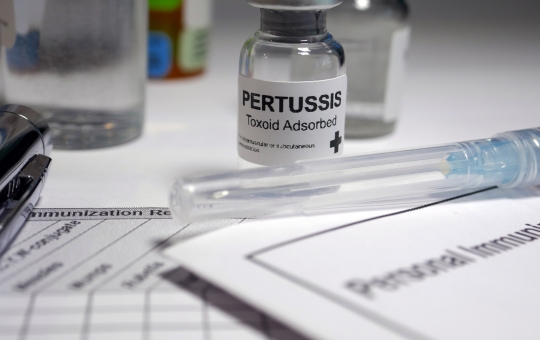The Most Common Symptoms of Whooping Cough (Pertussis)
Whooping Cough Symptoms:
Symptoms typically start 5-10 days after exposure. Early symptoms can last for 1-2 weeks. These typically include runny or stuffy nose, low grade fevers (less than 100.4) and mild, occasional cough. They are usually misdiagnosed as viral infections at this time. These symptoms gradually then progress to violent coughing fits. These generally last 2-10 weeks. Cough gets worse and becomes more common as the illness continues. The cough at this point can lead to vomiting, difficultly breathing, making a high pitched “whoop” when they inhale after a cough. The coughing can get so severe that it can cause rib fractures. Some patients may require hospitalization to control symptoms and give antibiotics.

Whooping Cough Treatment:
Treatment usually involves medicines for the symptoms and antibiotics to treat the bacterial infection causing the cough. The bacteria attack the microscopic hairs in the respiratory tract and damage them causing swelling of the airways and difficulty with clearing mucus in the airways. Using humidifiers helps loosen mucus and make them easier to cough up. Staying well hydrated also helps to make mucus more watery and therefore easier to cough up. It is important to talk to your doctor before starting cough medicines because they usually do not work for pertussis and can cause problems in children under 4 years old.
How to Reduce Risk:
The best way of reducing infections is for patient, family members and friends to get vaccinated against pertussis. If an infection or exposure occurs, then starting antibiotics early also help to improve outcomes because the severity of disease if less. It is also important to remember that pertussis spreads via air droplets. These droplets contain the bacteria that causes the infection. Practicing good hygiene like covering cough or sneezes, washing hands and using masks helps.

